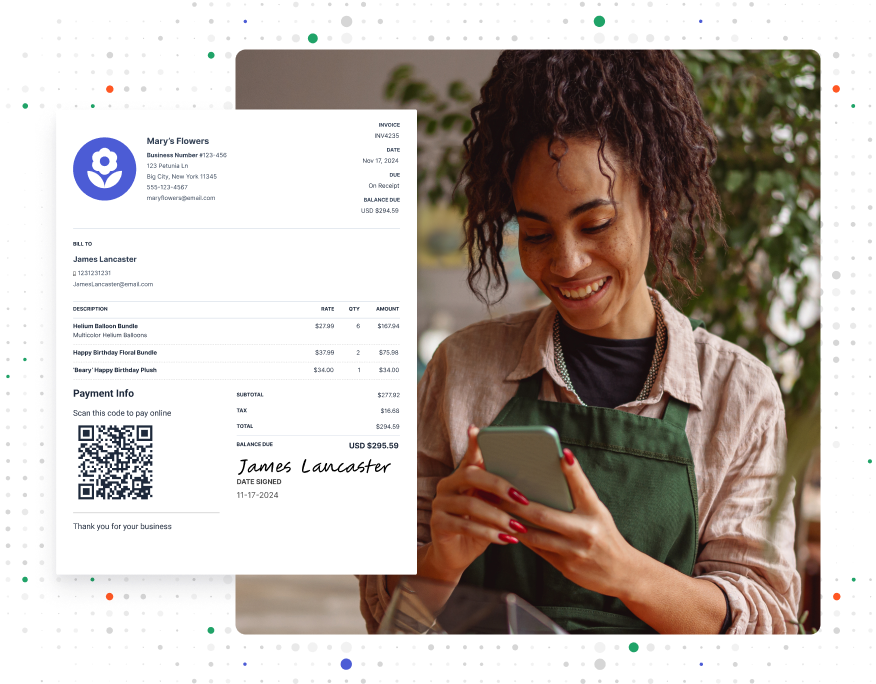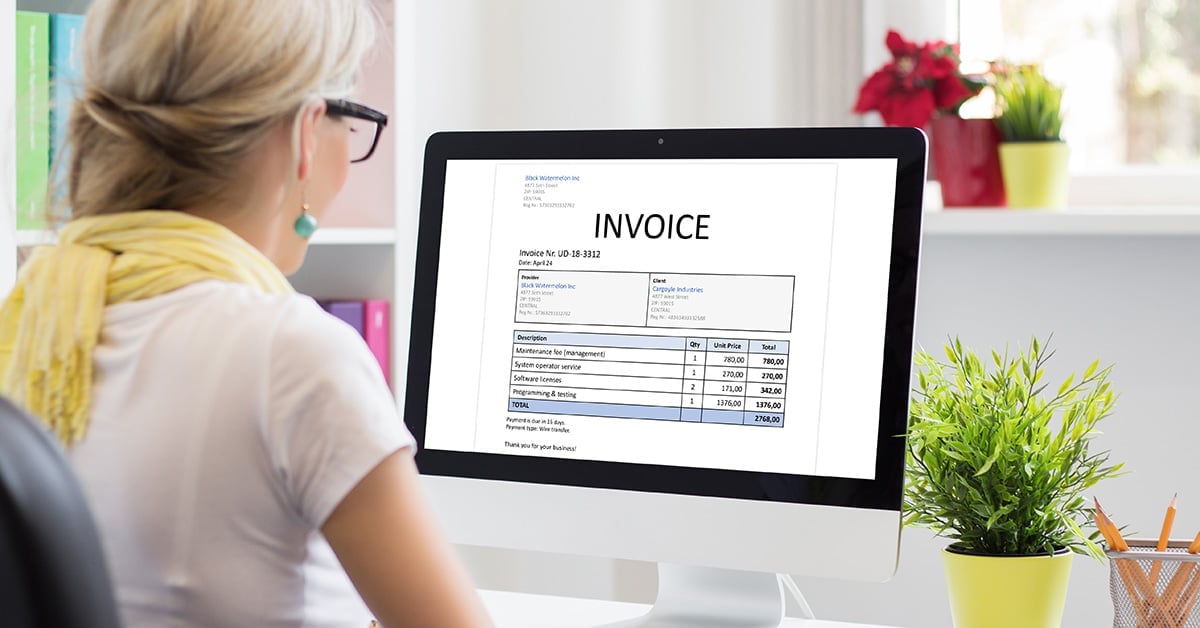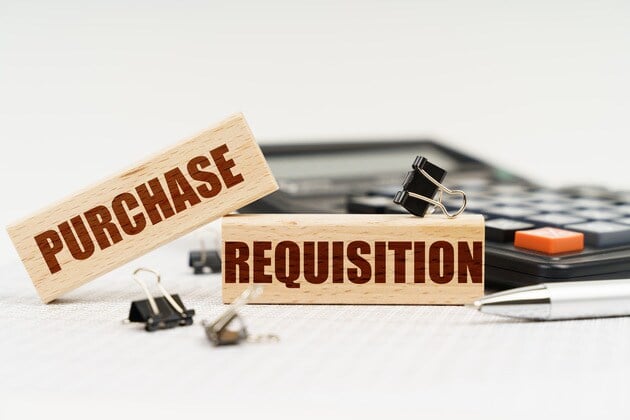A Step-By-Step Guide to Efficient Invoice Processing

The invoices are piling up, and your desk is starting to look like the Leaning Tower of Pisa. Turn all those papers into progress with better invoice processing.
Invoice processing is about taking organized steps to manage incoming payments. It starts when you receive an invoice and ends when it’s paid. Usually, it all happens within an online system that streamlines and documents everything in one place.
Here’s how to climb that tower of invoices and process them with confidence.
What Is Invoice Processing?
Invoice processing is about managing the invoices your business receives from vendors. It makes sure you don’t miss any important steps.
The first step is to verify an invoice’s accuracy. Check that the statement matches the goods or services you received and that the amount is correct. If everything looks good, you can send it for approval.
Once approved, the invoice moves on to payment processing. This is where you pay the vendor according to the terms. After sending the money, the final step is to record the transaction for accurate bookkeeping.
RELATED ARTICLE — How To Send an Invoice
Why Is Invoice Processing Important?

When you process statements fast, you keep vendors happy and maintain a steady flow of goods into your business. You also avoid late fees and hold a good reputation with suppliers.
But the benefits of invoice processing go beyond vendor relations. A solid system helps you stay on top of your own cash flow. You know exactly what you owe and when it’s due. That way, you can plan ahead and avoid any surprises that could drain your bank account.
Efficient processing also saves time and reduces errors. Instead of spending hours hunting down invoices or trying to decipher messy handwriting, you can focus on growing your business. Plus, when you have a clear system in place, you’re less likely to make mistakes. You won’t pay the same bill twice or forget to record a payment in your books.
RELATED ARTICLE — What Is a Commercial Invoice?
5 Benefits of Invoice Processing
Let’s take a look at some of the other benefits of invoice processing:
- Improved Record-Keeping. A well-organized system makes it easier to keep track of spending and find important information when you need it. This is especially helpful during tax season or if you ever face an audit.
- Scalability. As your business grows, so does the number of invoices you need to process. An efficient system helps you handle this increased volume without missing a beat.
- Timely Payments. When you process documents quickly and efficiently, you pay your bills on time, every time. This helps you avoid late fees and vendor issues.
- Saved Time. When you don’t spend hours chasing down payments or fixing errors, you have more time to focus on other critical tasks.
- Reduced Costs. Late fees, incorrect payments, and other mistakes add up over time. By processing invoices with an efficient system, you avoid these unnecessary costs and keep more money in your pocket.
RELATED ARTICLE — How To State Invoice Payment Terms (with Example Wording)
Invoice Processing in 6 Steps

Processing an invoice is straightforward when you stick to the steps. Here’s a breakdown of what’s involved:
1. Receive the Invoice
The first step is getting the statement from your vendor. This can happen in a few different ways. Some vendors may send you a physical copy in the mail, while others will email you a digital version. Either way, the key is to have a designated place for all incoming documents so nothing gets lost.
2. Check for Accuracy
Once you have the invoice in hand, give it a thorough inspection. Make sure all the essential details are there. This includes the vendor’s name and contact info, the date, and a description of the goods or services. Double-check that the amount charged matches what you were expecting based on your purchase order or contract.
3. Get Approval
Before paying an invoice, it must be approved by someone with spending authority in your company. This could be a department head, a finance manager, or even the owner, depending on the business structure. The point is to have a clear approval process in place so nothing gets stuck in limbo.
4. Schedule Payment
Once the invoice has the go-ahead, it’s time to schedule payment. This is where having a clear picture of your cash flow comes in handy. Make sure you have enough cash to cover the bill. You also need to decide on the best payment method, like check, bank transfer, or credit card. The company receiving the money should tell you what it prefers.
5. Pay the Vendor
Execute the payment through your bank or accounting software. Be sure to include any relevant reference numbers, like the invoice number, so the vendor knows which bill you’re paying.
6. Record the Payment
The final step is to record the payment in your accounting system. This usually involves creating a new entry in your general ledger. This entry shows the money leaving your bank account and going to the appropriate vendor account. Don’t skip this step. It helps you keep accurate financial records and avoid confusion down the line.
RELATED ARTICLE — How To Keep Track of Invoices & Payments
Understanding Automated Invoice Processing and Its Benefits
As your business grows, you may find that manual processing takes up too much time. And human error can cause mistakes that are hard to catch right away. That’s where automation comes in.
Automated invoice processing uses special software to handle every aspect of invoicing. This includes:
- Scanning invoices and extracting key details
- Matching statements to purchase orders
- Routing documents for approval
- Sending payments to vendors automatically
When you automate these tasks, you can process invoices faster and at a lower cost. Plus, you’ll have more time to focus on growing your business and keeping customers happy.
4 Invoice Processing Challenges To Watch Out For

Learning how to automate invoice processing can help you sidestep many potential problems. In fact, you may never run into issues if you use an effective online invoice payment processing platform. But knowing about potential challenges in advance will equip you to handle them smoothly, just in case.
These challenges include:
- Inaccurate Data. Mistakes happen when documents are missing important details, have incorrect totals, or don’t match up with purchase orders. These inaccuracies can lead to processing and payment delays.
- Lost or Missing Invoices. Even when you automate your system, you still have to deal with paper invoices. And it’s easy to lose them. A missing page can cause major delays and headaches for you and your vendors.
- Slow Approvals. Going back and forth or waiting for signatures can slow down your process. This can lead to late payments and strained vendor relationships.
- Lack of Visibility. When you automate invoice processing, you might not pay close attention to every document. It can be tough to keep track of where things stand. This lack of visibility makes it hard to plan for upcoming payments or catch potential issues before they become major problems.
Use Invoice Simple To Process Your Invoices
Tracking incoming invoices is one thing. But when you send them out to clients and customers, using an invoice processing platform is one of the most effective ways to avoid common pitfalls and save time and money. That’s why you should try Invoice Simple.
Invoice Simple’s automated system bills customers quickly, tracks receipts, and notifies you of every due date and action item. It also keeps a record of every bill recipient, tracking monthly transactions with built-in reporting that’s easy to share with your accountant. You’ll make invoice processing easy for the people you work with so they come back again and again.
Start Your First
Invoice Today
Create customized and professional
invoices and connect with clients








